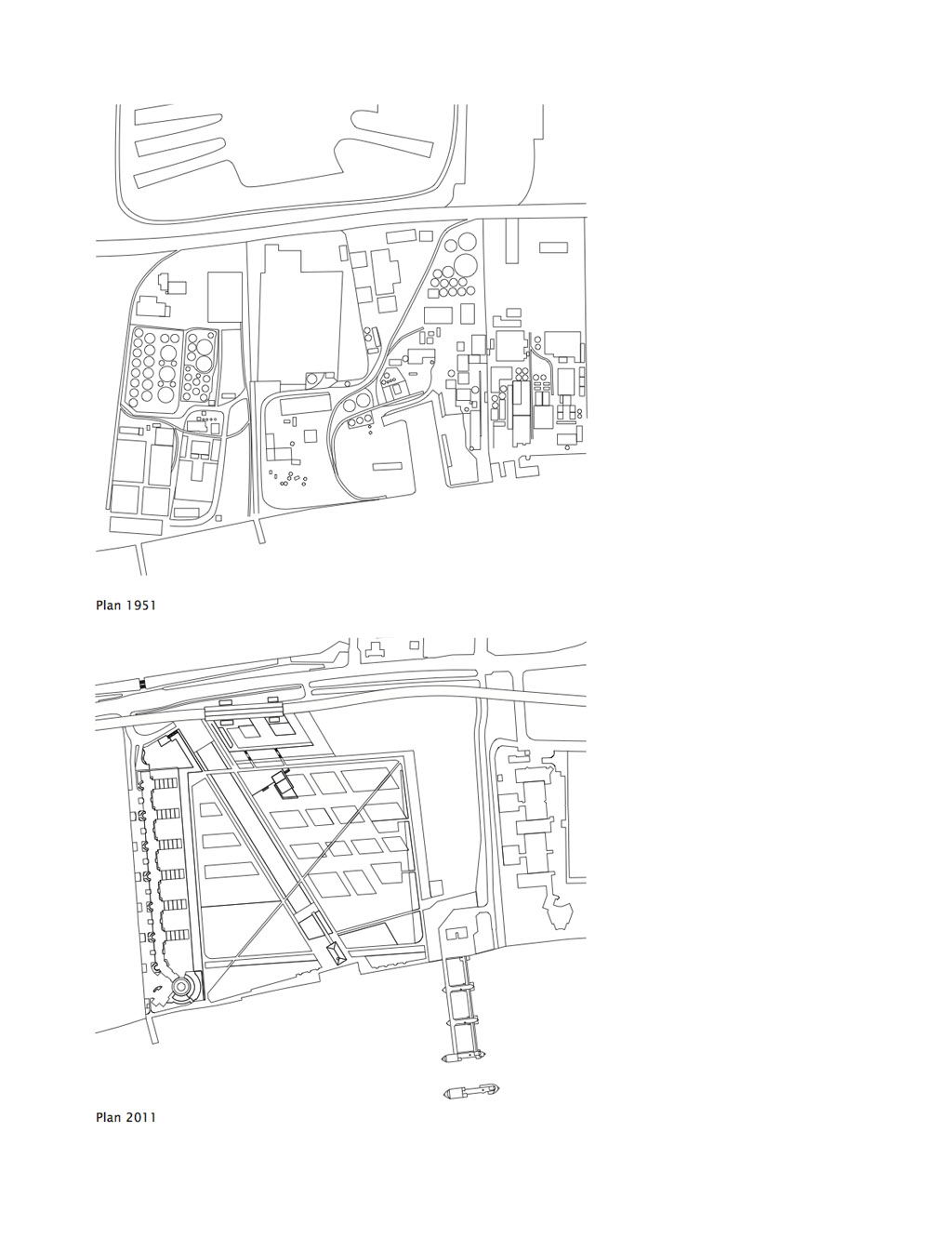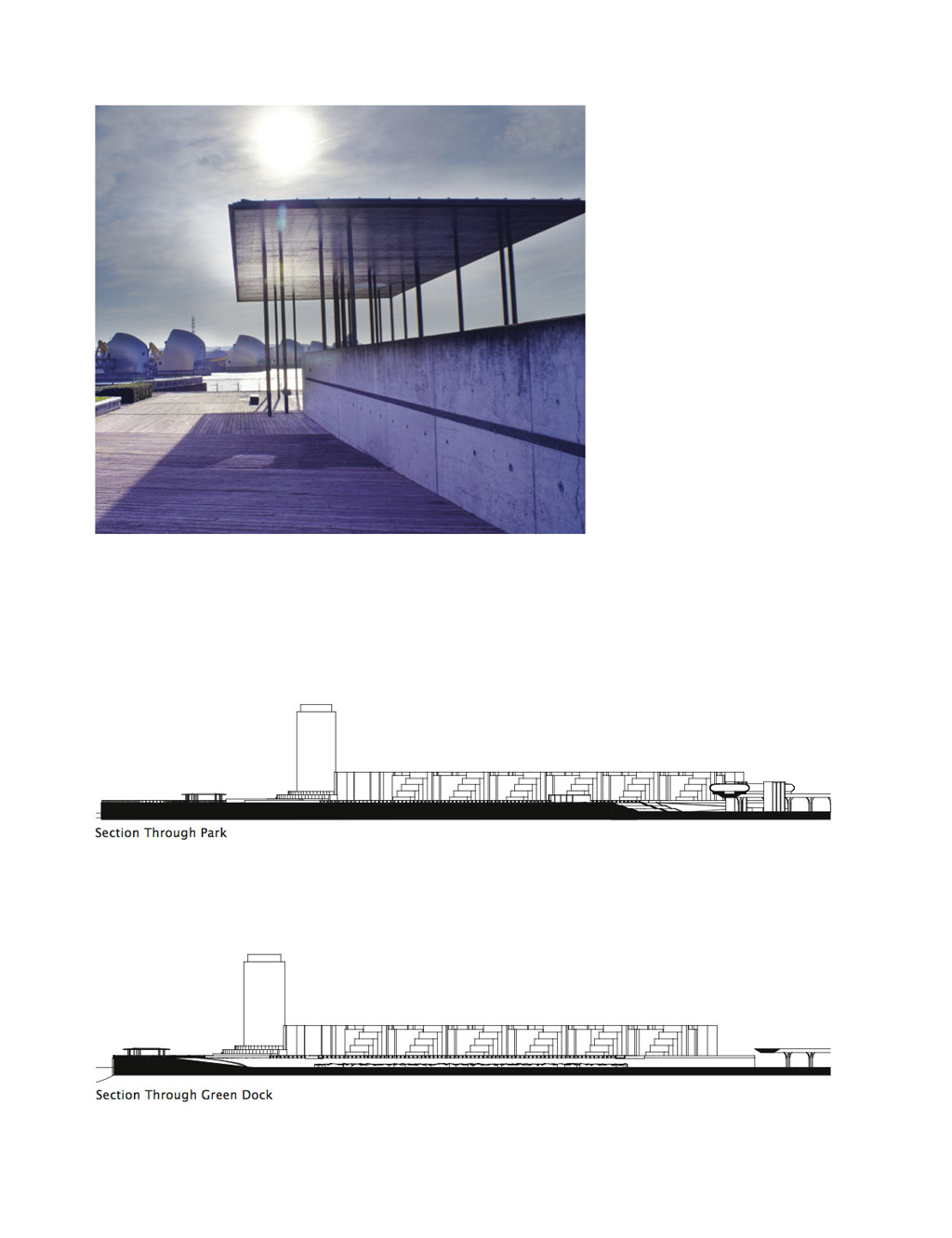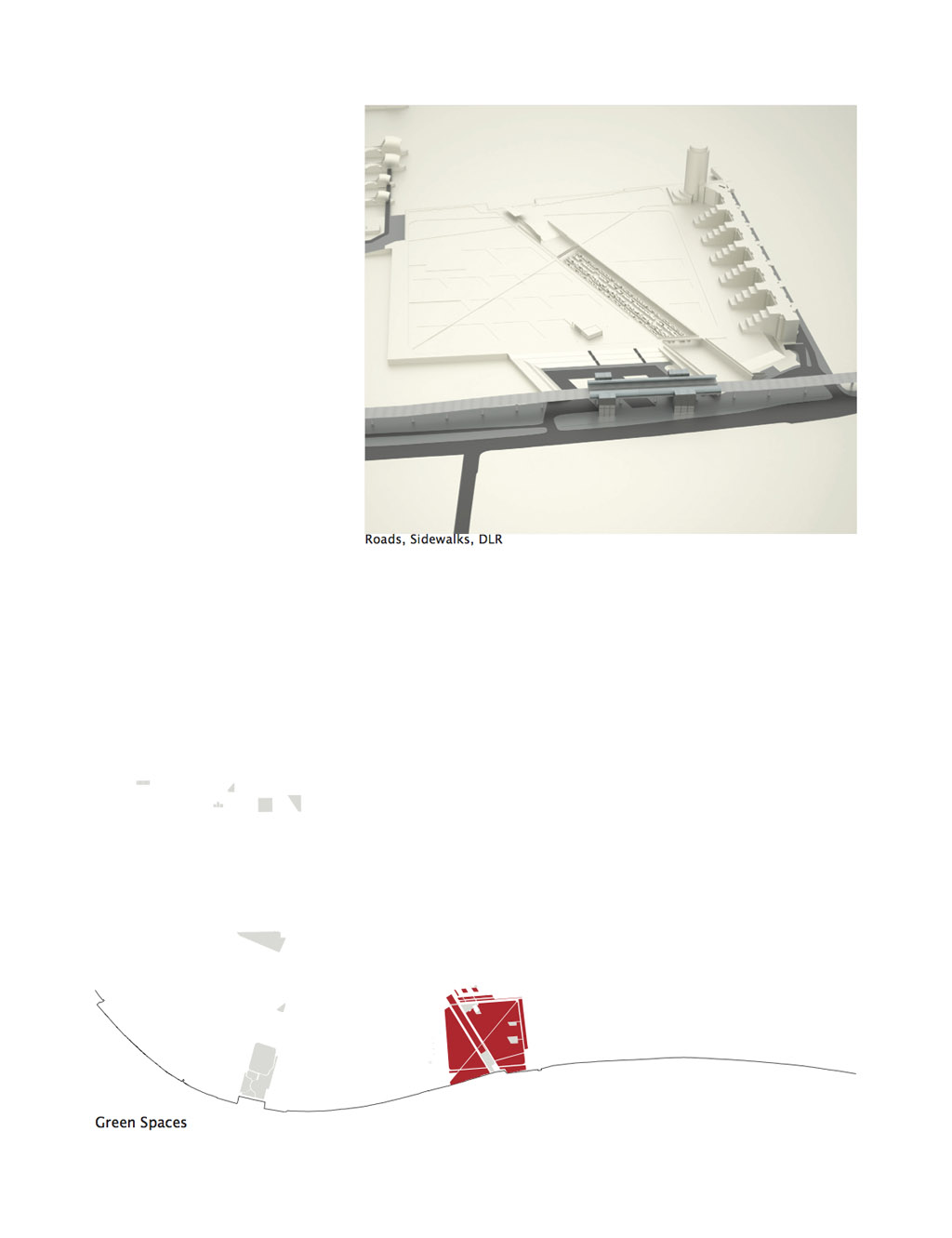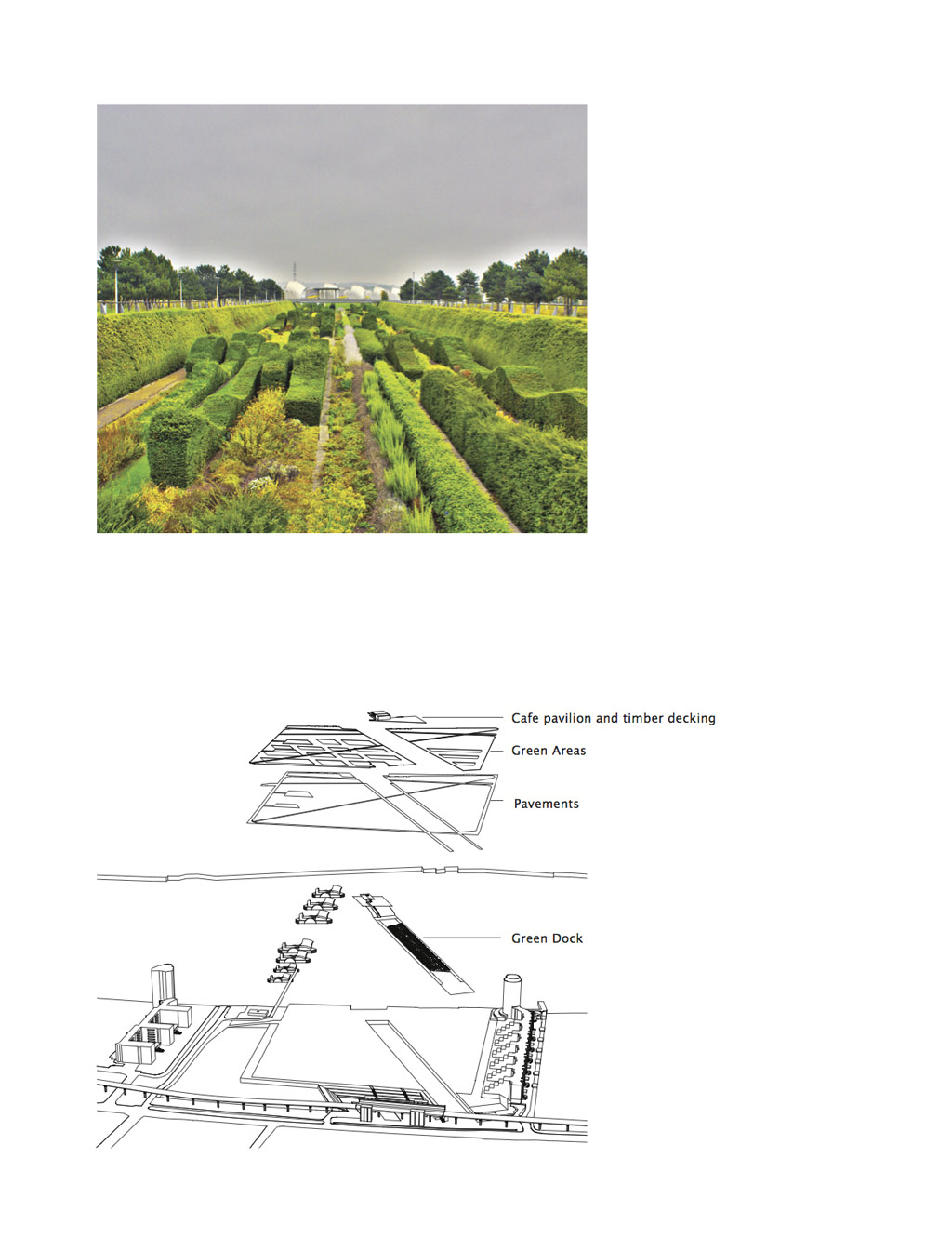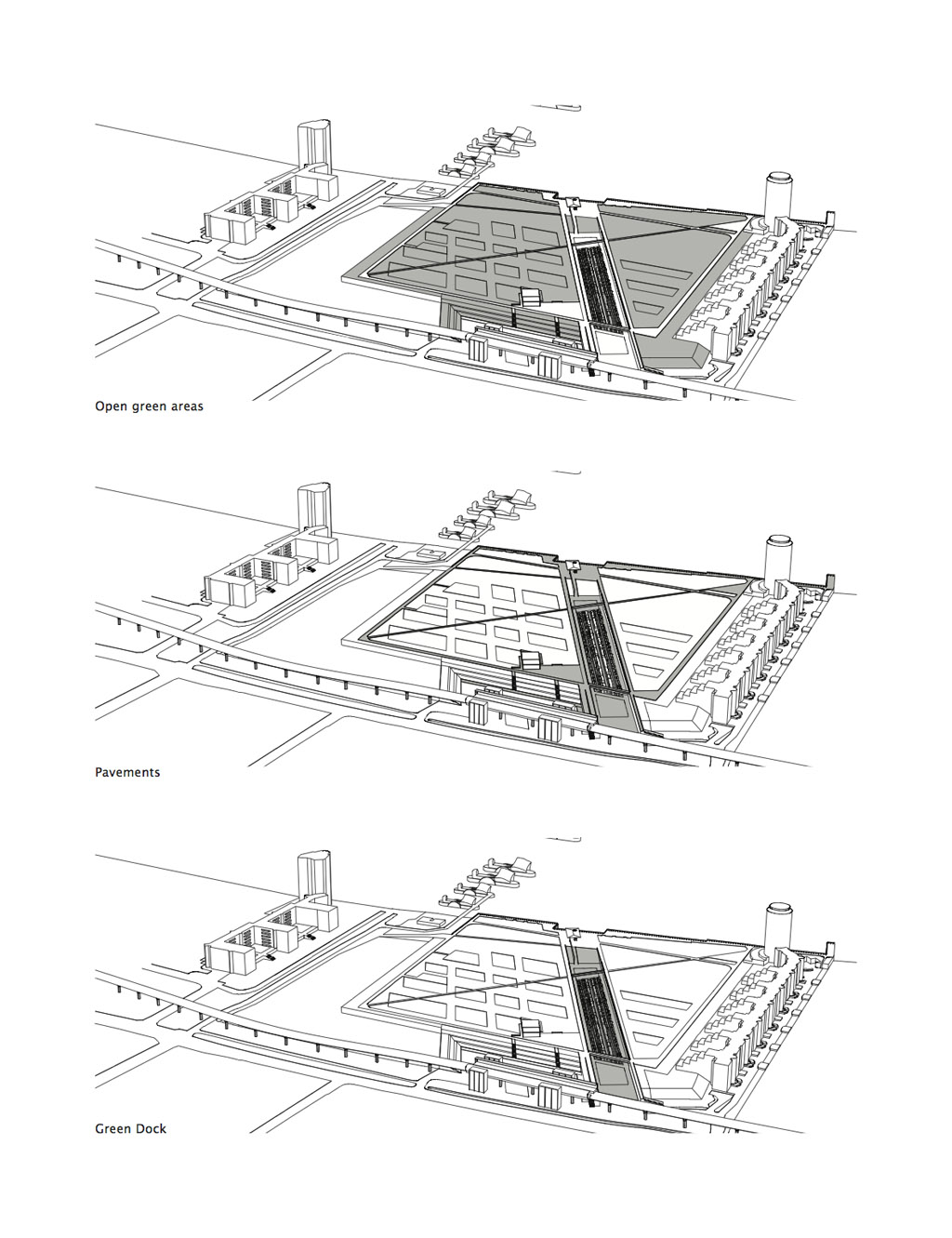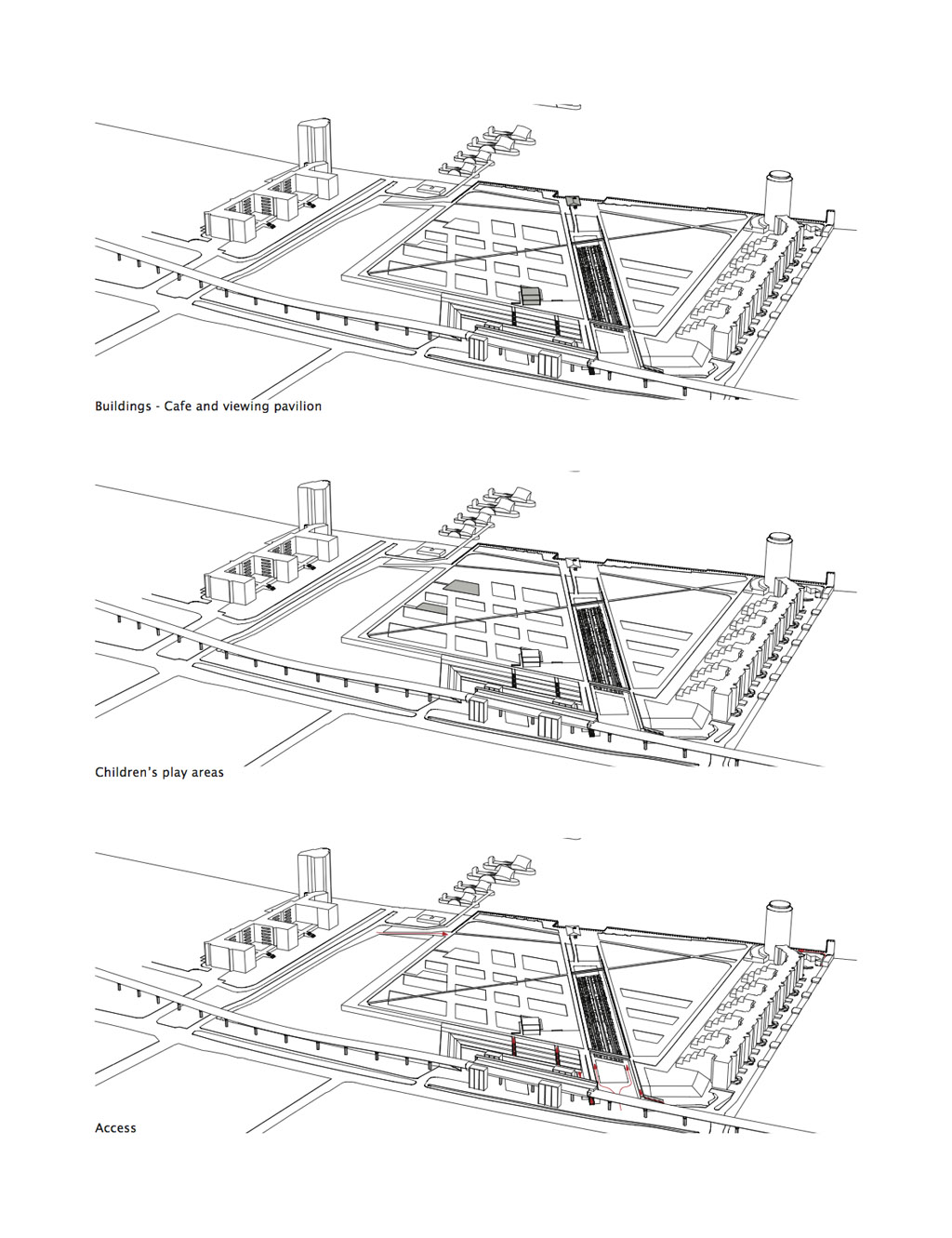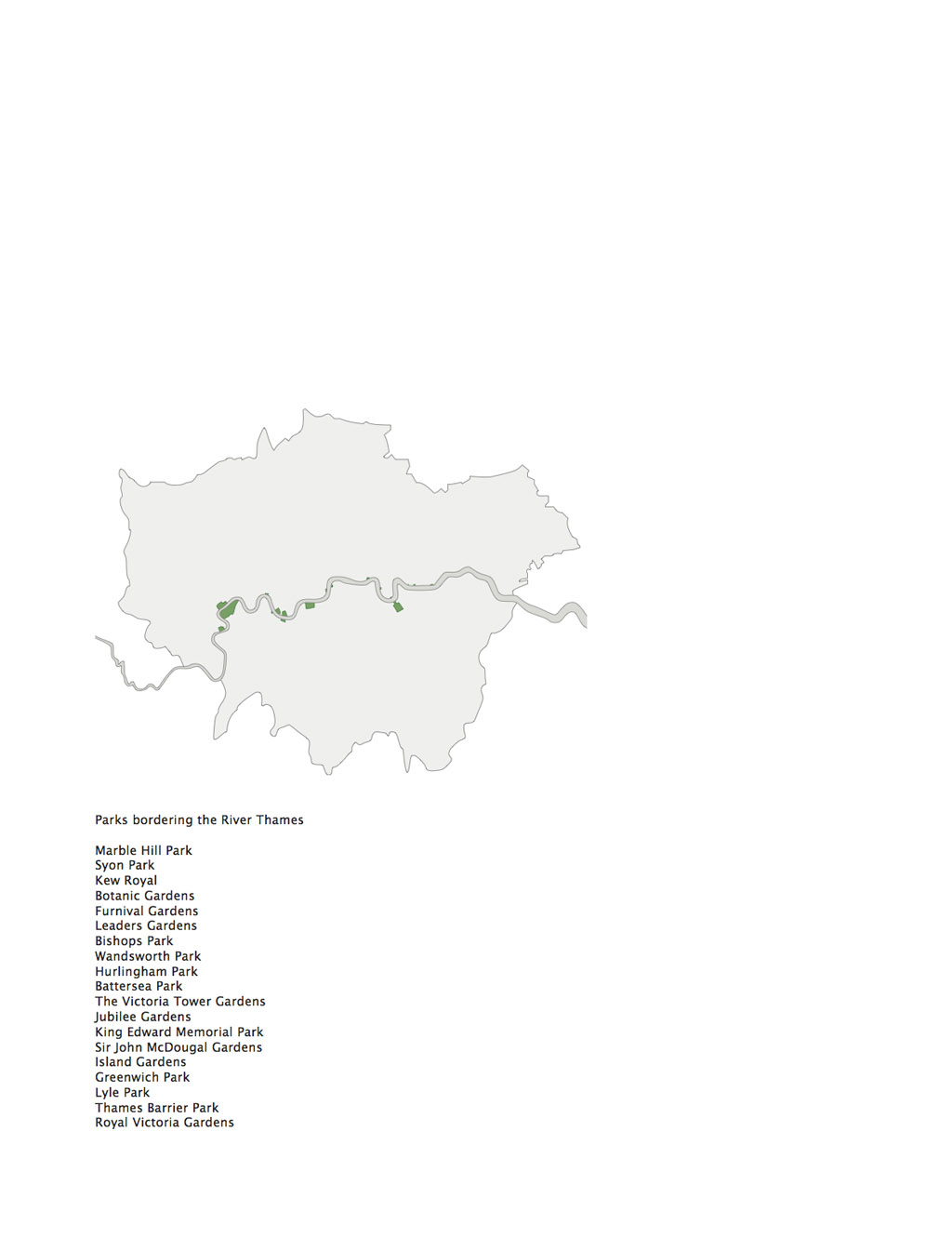The Thames Barrier Park is a riverside park in London and stands as a vivid example of modern landscape in the UK. The park was commissioned by the London Dockland Development Corporation as being a catalyst for urban regeneration. The idea for creating a riverside park at that location dates back to 1985, but it was not implemented then because of a contamination on the site caused by factories that remained there until 1985, when the London Dockland Development Corporation purchased the site and arranged for an international design competition. The aim of the winning entry to the competition was to create a deep ‘green dock’ cutting through the 9ha set diagonally to provide a vista ending at the abandoned Millennium Mills to the North and the Thames Barrier to the South.
The design team’s idea was that earth should be shifted in order to create different levels and consequently allow for a spectacular effect, as well as act as a barricade for the park, isolating it from excessive noise produced by the Woolwich Road.
The park is strategically placed and very well connected; it connects to the Pantoon Dock DLR Station, there are bus routes leading directly to it and there is a free car park for visitors. There is a cafe next to the DLR Station and a visitor centre, which was designed by Patel Taylor and incorporates the white concrete used throughout the park and green oak.
What is remarkable about the 5 meter green dock which splits the park is that is has no side exits. Therefore, once people enter, they are inclined to look North towards the Thames Barrier, the wavy hedges and the evergreen honeysuckle which covers 70 degree sloping walls, and ultimately arrive at a ramp which leads up to the viewing pavilion, which consists of 23 irregularly spaced steel columns that supper a timber room with a large circular hole. The purpose of the pavilion is to commemorate all those who tragically lost their lives during the London Blitz.


